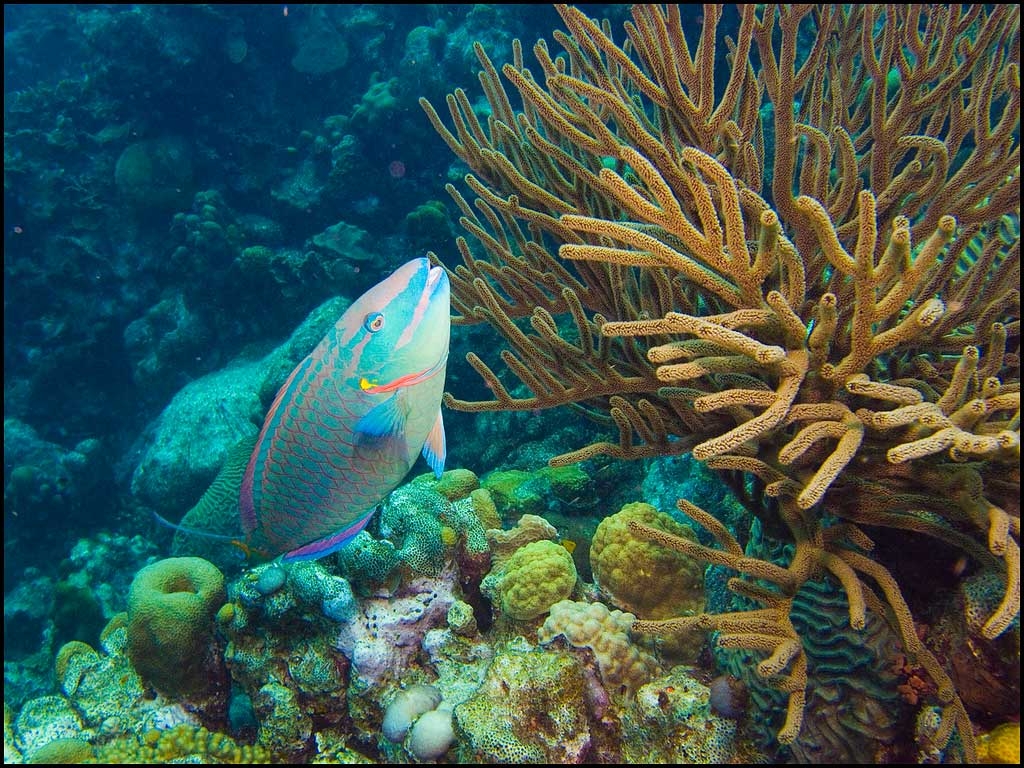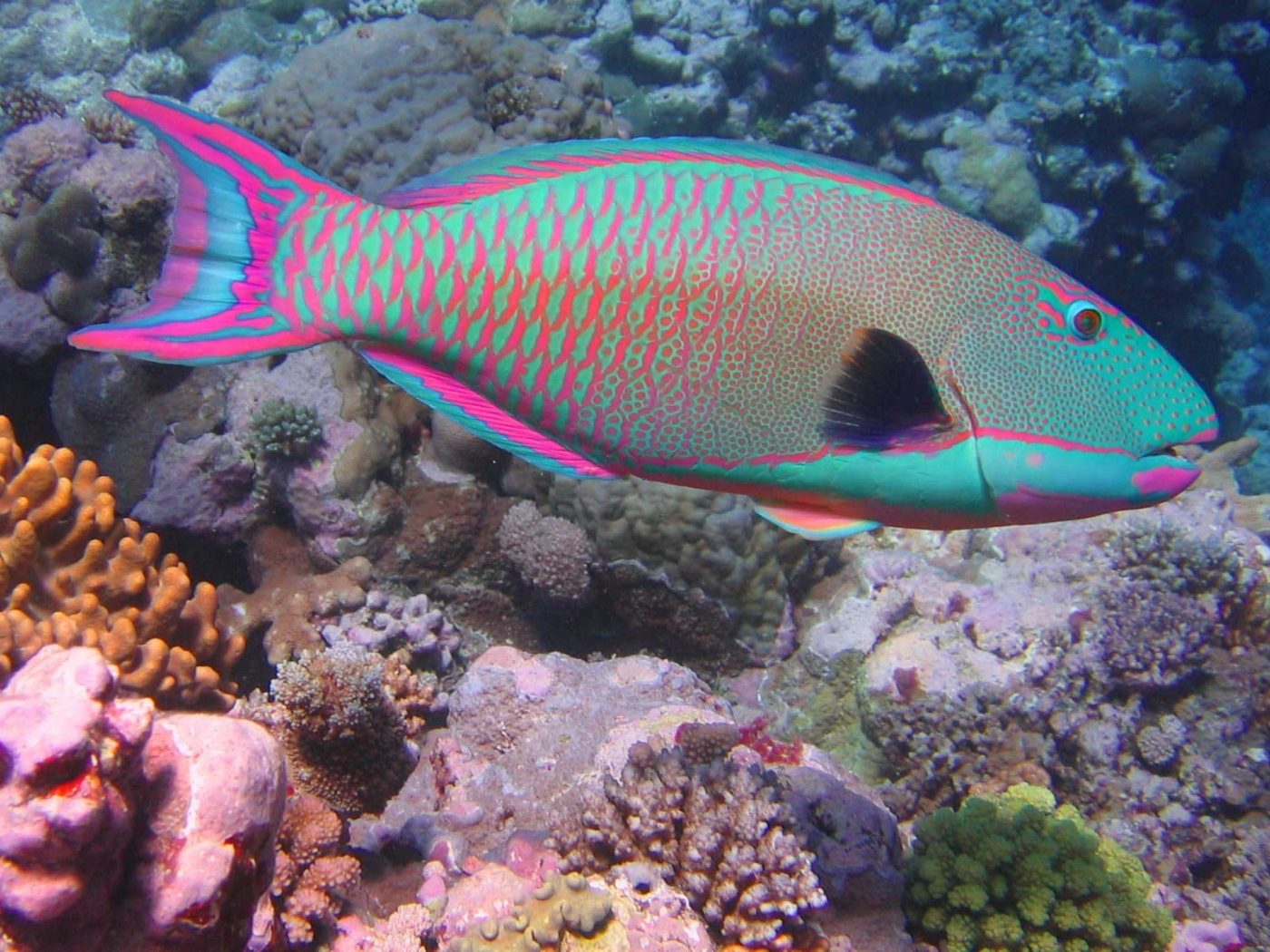The Parrot Fish
A Sand-Making Machine
WHERE does sand come from? There are many sources. But the one described in this post might surprise you. It is a fish that grinds coral into fine sand
Parrot fish live in various tropical waters throughout the world. After swallowing crushed coral, they extract tiny food morsels and then expel the rest in the form of sand. To do its job, the parrot fish uses its powerful beaklike jaws and strong back teeth. Some species can live as long as 20 years, without wearing out their teeth.
In some areas, by busily chomping away on dead coral, the parrot fish produces more sand than any other natural sand-making process. Some researchers estimate that a typical parrot fish produces hundreds of pounds (kg) of sand a year.

parrot fish (photo by Waywuwei)
The parrot fish performs another vital task. As it grazes intensively on dead, algae-coated coral and vegetable material, it also keeps the coral clean. The peculiar diet of parrot fish thus maintains the reef in good condition.
1. Parrotfish “discharge” up to 100 kg of white sand a year for every year of their lives.
Larger parrotfish are like sand factories, producing upwards of a ton of sand per year. The University of Exeter found that parrotfish produced more than 85% of the new sand-grade sediment on the reefs in the Maldives. When we consider the impact over thousands of years, imagine the amount of beautiful white sand parrotfish can produce if they were allowed to live and not consumed. This is very important in countering beach erosion.
2. Parrotfish are also essential to the survival of coral as they act as ‘natural cleaners’ of parasites that grow on it.
Without the help of the parrotfish the coral would simply die. According to a 2012 study, the loss of parrotfish disturbs the delicate balance of coral ecosystems and allows algae, on which they feed, to smother the reefs. The study also found that Caribbean corals have declined by more than 50 per cent since the 1970s and may disappear in the next 20 years as a direct result of the loss of parrotfish and sea urchins — the area’s two main grazers — and not primarily as a result of climate change, as is widely believed. The study further shows that some of the healthiest Caribbean coral reefs are those in areas where governments “have restricted or banned fishing practices that harm parrotfish, such as fish traps and spearfishing”.
3. The economy.
Coral reefs help to build and protect Dominican Republic’s beautiful white sand beaches, which attract tourists from around the world. Reefs provide critical habitat for Dominican Republic’s artisanal and industrial fisheries, and also protect coastline — including coastal communities and tourist hotels. In other words, eating parrotfish has a direct impact on the economy. Tourists travel to Dominican Republic for the sand and the sea. Tourism depends on the beaches, and the beaches depend on the coral, all made possible by this voracious species. By consuming parrotfish we rob the beaches of their sand, and in turn harm the economy.
PARROT-FISH FACTS
Parrot fish (known to scientists as Scaridae) are a large family of some 80 different species that frequent coral reefs throughout the Tropics. Their name comes from their distinctive mouth that looks somewhat like a parrot’s beak. The length of parrot fish ranges from 20 to 40 inches (50 to 100 cm).


